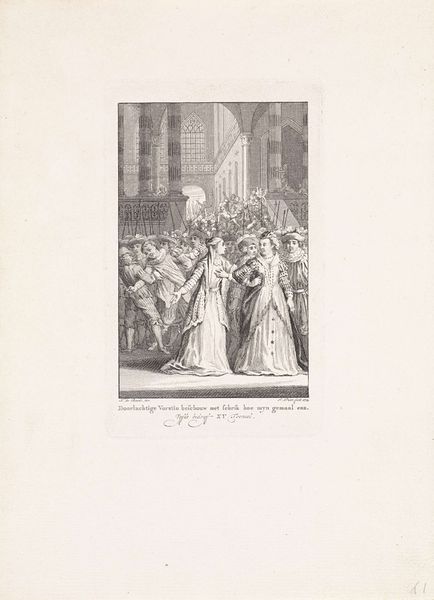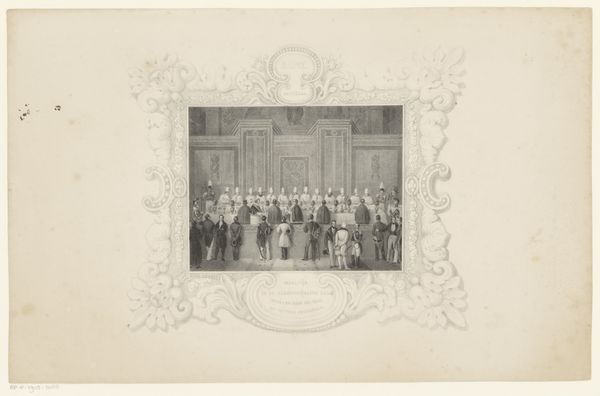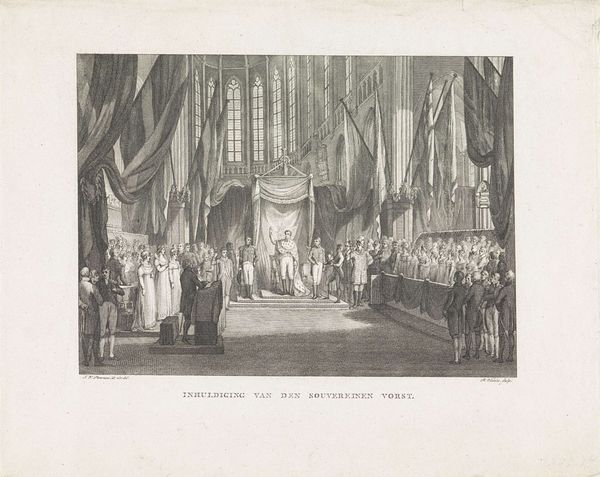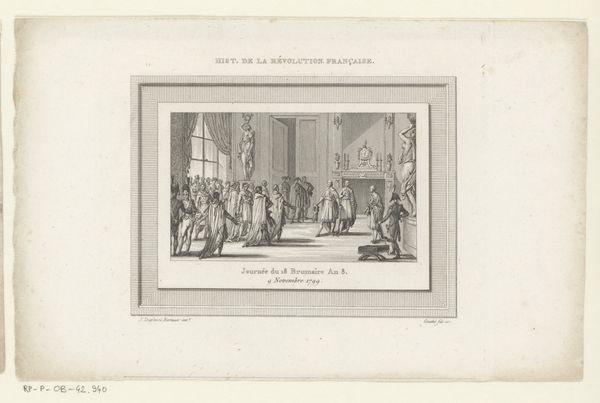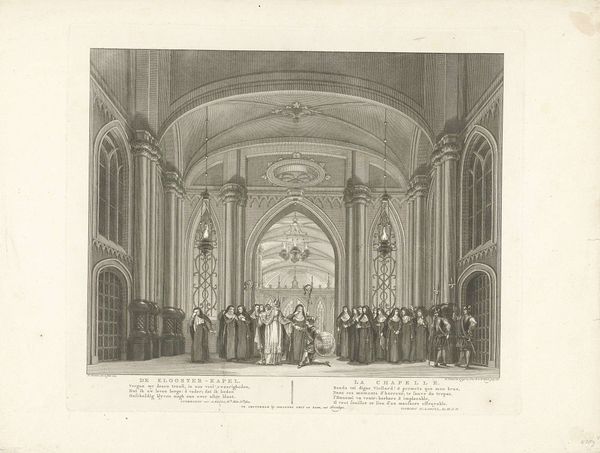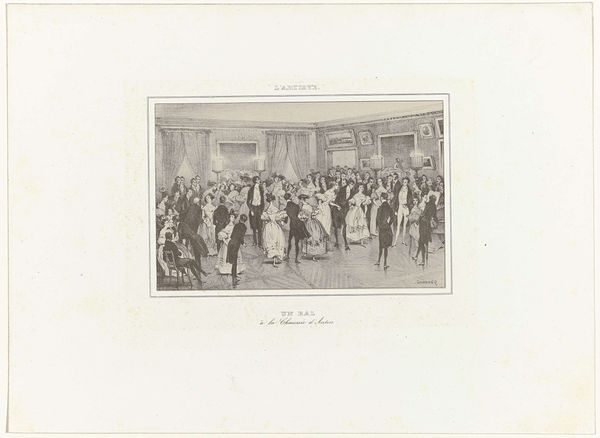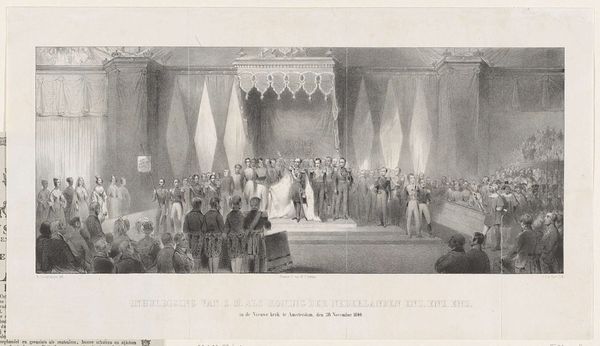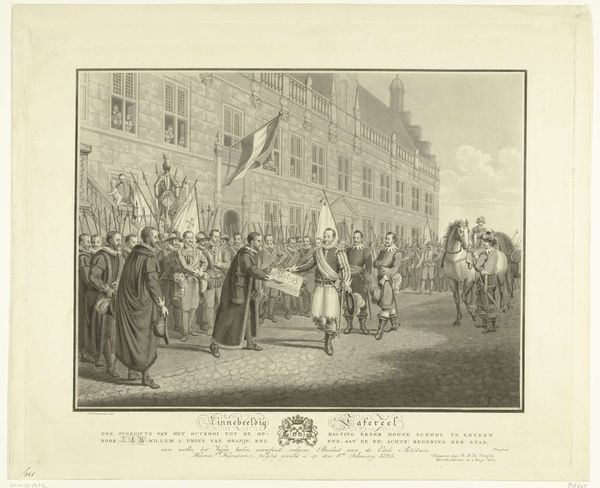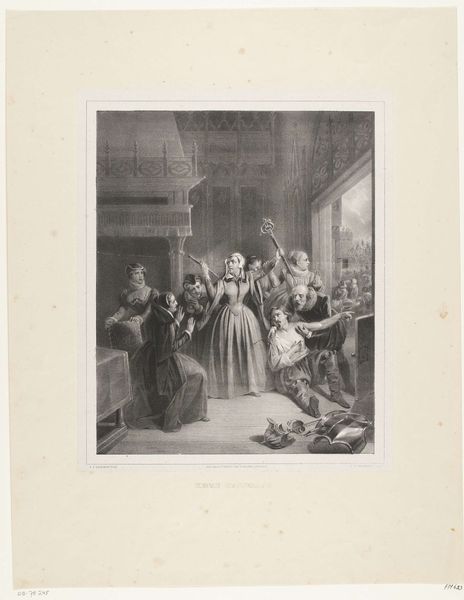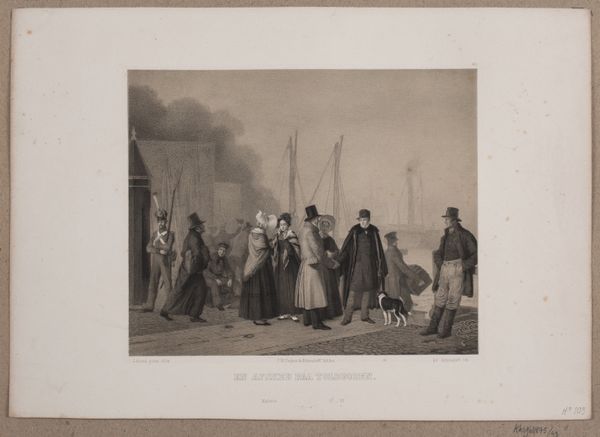
Nederlandse bisschoppen op het Eerste Vaticaans Concilie van 1869-1870 1870
0:00
0:00
print, engraving
#
portrait
#
medieval
# print
#
history-painting
#
academic-art
#
engraving
#
realism
Dimensions: height 348 mm, width 450 mm
Copyright: Rijks Museum: Open Domain
Editor: So, here we have "Nederlandse bisschoppen op het Eerste Vaticaans Concilie van 1869-1870," or "Dutch Bishops at the First Vatican Council of 1869-1870", an 1870 print by Edouard Taurel currently at the Rijksmuseum. It’s an engraving, giving it this almost photographic, documentary feel. What can you tell me about the social context? Curator: It's a fascinating depiction of power dynamics and institutional structures. The First Vatican Council was a pivotal moment for the Catholic Church, solidifying papal authority. This image, appearing in print, served as propaganda to sway the public image of the Church. How do you think prints like this circulated at the time? Editor: Probably newspapers, right? And maybe framed in houses of wealthy patrons, solidifying their loyalty and… piety? Was this "realism" trying to convey objectivity, or was there a definite political slant? Curator: That’s the crux of it. While employing a realistic style, the image subtly reinforces papal authority, placing these bishops, representing the Dutch arm, in allegiance. Consider the architecture and the audience present. Taurel frames it as spectacle, designed to legitimize decisions that altered Church-state relations throughout Europe. Who do you think consumed images like this, and to what ends? Editor: I’d guess Catholics who felt unsure about all the changes happening then – a way to reassure them of the Church's strength and unity? Or perhaps also non-Catholics, maybe sparking conversation or debate around its influence? I suppose the engraving's existence underscores that religious belief was part of political life. Curator: Precisely. And understanding the historical reception, circulation, and strategic intent lets us appreciate that images aren't passive; they are active agents in societal power struggles. I now see that too and understand the meaning a bit deeper. Thanks!
Comments
No comments
Be the first to comment and join the conversation on the ultimate creative platform.
